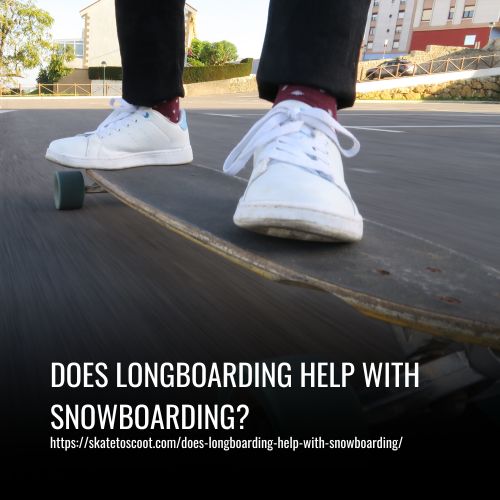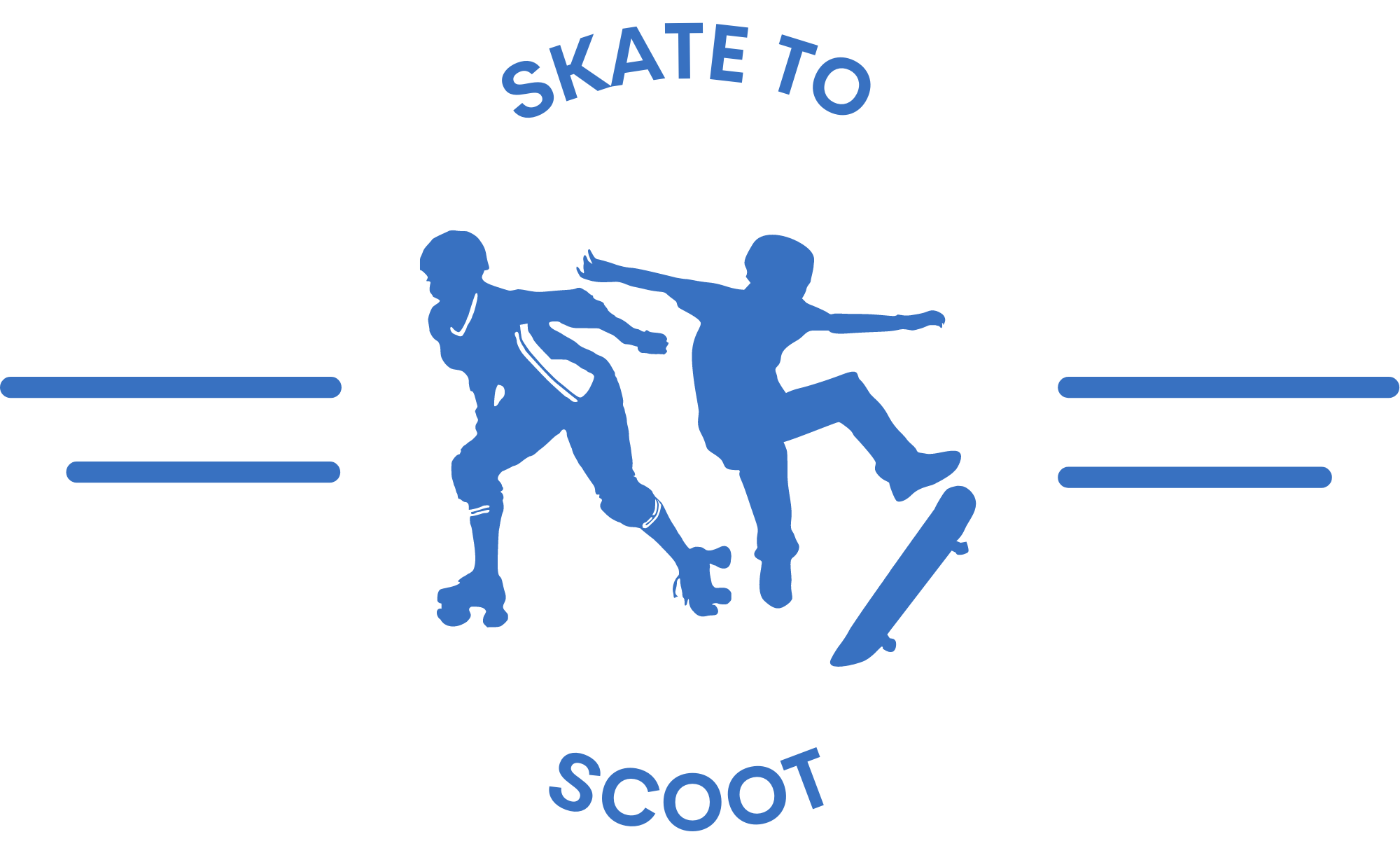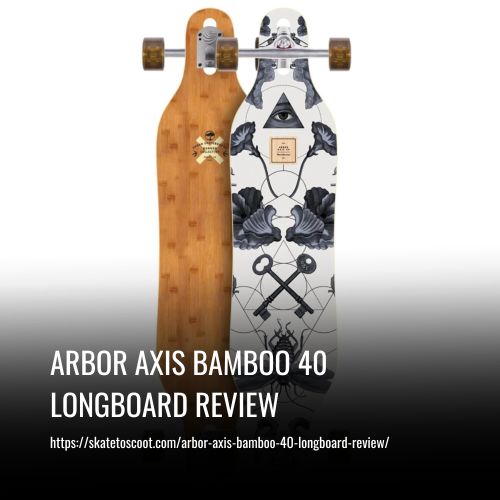As an Amazon Associate we earn from qualifying purchases.
Yes, longboarding can help with snowboarding because they require similar skills, techniques, and traits. Many snowboarders use longboards for off-season training to stay in shape and prepare for the next snowboarding season. However, it’s important to note that longboarding and snowboarding are still distinct activities and one cannot fully replace the other.

How Longboarding helps with Snowboarding
Longboarding offers more than just thrills and enjoyment – it also provides valuable benefits for snowboarders. From building strength to improving technique, longboarding can greatly enhance a snowboarder’s skills on the slopes.
1. Building Strength
Longboarding and snowboarding are incredibly similar in terms of the muscles required. The strength and stability developed from longboarding can greatly benefit snowboarders when it comes to controlling and maneuvering their boards. Longboarding helps to build lower thigh and ankle strength, which is essential for stopping and carving on a snowboard.
2. Improving Technique
The muscular technique used in longboarding, especially when sliding and driving the board across the pavement, is very similar to the techniques needed for snowboarding. Longboarding helps to improve the ability to quickly and crisply maneuver the board, making it easier to control a snowboard at higher speeds.
3. Ankle Support
Longboarding also helps to improve ankle strength and stability, which is beneficial for snowboarders who may experience slipping or discomfort in their snowboard boots. The techniques and bracing used in longboarding can be applied to snowboarding to enhance ankle support and control while carving and stopping.
Whether it’s building lower thigh and ankle strength or improving board control, the transferable skills gained from longboarding can make a significant difference in a snowboarder’s performance on the mountain.
Advantages Snowboarding Beginners Can Get From Longboarding
Longboarding has several advantages for snowboarding beginners, especially when it comes to mastering the fundamentals. Since longboards and snowboards are similar in size, having balance and control on one can translate to the other. This means that if you are already proficient in longboarding, you will be able to pick up snowboarding more quickly.
On the other hand, individuals who are new to snowboarding without prior longboarding experience may face a steeper learning curve in finding their balance. Longboarding can help newcomers familiarize themselves with the sensation of being on a board, making the transition to snowboarding smoother.
Another advantage of longboarding is speed control. Riding on dry ground can be more challenging when it comes to controlling speed. However, with practice on a longboard, beginners can effectively learn how to manage their speed. This skill will then become instinctive when using a snowboard, making it much easier to control speed on the slopes.
Advantages That Snowboarding Professionals Can Get From Longboarding
Longboarding can provide several advantages for snowboarding professionals during the off-season. While it’s not the same as being on a snowboard, longboarding is the closest alternative they can have. It helps them stay in shape and maintain their skills until the snow season returns.
However, it’s important to note that longboarding should not be seen as a substitute for snowboarding. The fundamentals between the two are quite different, so it’s crucial for professionals to go through the necessary basics in snowboarding.
That being said, longboarding can still benefit professionals who already understand the differences between the two sports and possess the skillset to adjust accordingly. It allows them to maintain their balance, control, and muscle memory, which can greatly aid their transition back to snowboarding when the time comes. In addition, longboarding provides an opportunity for professionals to stay active and enjoy a board sport even when there is no snowy terrain available.
Key Differences Between Snowboarding and Longboarding
Snowboarding and longboarding are popular board sports, but they differ in several key aspects. The first major difference lies in the equipment used. While snowboarding requires a specialized snowboard with bindings to secure the rider’s feet, longboarding involves riding on a complete longboard or cruiser board, which does not use bindings.
Techniques and riding styles also vary between the two sports. Snowboarding focuses on navigating through snow-covered slopes and terrain, utilizing specific snowboarding skills such as carving and sliding on the toeside or heelside edge. Longboarding, on the other hand, is often practiced on flat surfaces or smooth pavements, allowing for a more free-flowing style of riding.
The absence of bindings in longboarding gives riders the freedom to perform various tricks and maneuvers, relying more on balance and core strength. Snowboarding, with its bindings providing stability and control, allows for more aggressive carving and precise turns.
Similarities Between Snowboarding and Longboarding
Snowboarding and longboarding are board sports that share some key similarities. Both sports require riders to balance on a board and use their body movements to control their direction and speed. One of the main similarities between snowboarding and longboarding is the concept of a “duck stance.” This stance involves positioning the feet with the toes angled outward, which allows for better stability and control.
Additionally, both sports require riders to learn how to shift their weight to initiate turns and navigate different terrain. The muscle memory developed from longboarding can transfer to snowboarding, as both sports involve similar movements and techniques.
While there are some differences between the two, such as the use of bindings in snowboarding and the lack of them in longboarding, the similarities between these board sports make longboarding a valuable activity for snowboarders looking to improve their skills. Whether it’s sliding on a toeside edge or practicing freestyle tricks, longboarding can help snowboarders gain confidence and enhance their overall riding experience.
Similarities in Skills Needed
Snowboarding and longboarding may have their differences, but they also share some similarities when it comes to the skills required for both sports. One of the fundamental skills necessary for both snowboarding and longboarding is balance. Whether gliding down a snowy slope or cruising on a flat surface, maintaining balance is key to staying upright and in control.
Control is another skill that translates across both sports. Whether it’s navigating through snowy terrain or carving through turns on a longboard, having control over your movements and being able to adjust your speed is essential for a smooth and enjoyable ride.
Turning techniques are also similar between the two sports. In snowboarding, riders use their edges to initiate turns, while in longboarding, shifting weight and using body positioning can help execute smooth turns. Both sports require an understanding of weight distribution and how it affects the board’s response.
Longboards are Closer in Size to a Snowboard
Longboards are a fantastic tool for cross-training and improving your snowboarding skills. One of the reasons longboarding is so effective for snowboarders is that longboards are closer in size to a snowboard compared to other types of skateboards.
While there is no specific definition for a longboard in terms of size and shape, I consider decks that are 39 inches or longer to fall into this category. This longer length closely resembles the size of a snowboard, allowing riders to replicate their snowboarding stance and movements on the longboard.
Shorter cruiser boards, while still enjoyable, often lack the space needed to fully mimic the snowboarding experience. To truly get the feeling of standing on a board like your snowboard, I recommend opting for a full-length longboard in the range of 40 inches or more.
Longboard brands like Sector 9, Santa Cruz, Never Summer, and Arbor offer quality options that cater to both longboarding and snowboarding. These companies understand the connection between the two sports and design longboards that can enhance your snowboarding skills.
Muscle Memory & Balance Transfer
Muscle memory and balance transfer play a significant role in both snowboarding and longboarding. The concept of muscle memory refers to the ability of our muscles to remember and repeat certain movements with little to no conscious effort. This is crucial in board sports such as snowboarding and longboarding, as it allows riders to perform complex maneuvers and tricks smoothly and effortlessly.
When it comes to snowboarding and longboarding, muscle memory is developed through consistent practice and repetition. As riders repeat specific movements on their longboard or snowboard, their muscles gradually learn and remember the correct techniques. This helps riders execute these movements more fluidly and efficiently over time.
Flat Surfaces to Practice On
Flat surfaces such as parking lots, empty roads, and smooth pavement are ideal for practicing both snowboarding and longboarding. These surfaces offer several advantages for honing skills and technique in both sports.
Firstly, flat surfaces provide a consistently smooth and even terrain, which allows riders to focus on their body movements and board control without the distraction of uneven surfaces or obstacles. This enhances the learning experience and helps riders develop muscle memory by repeatedly executing the correct techniques.
The lack of inclines on flat surfaces also allows riders to concentrate solely on their balance and weight distribution. Without the challenge of navigating slopes or downhill terrain, riders can focus on mastering the fundamental skills required for both snowboarding and longboarding, such as turning, carving, and maintaining a stable stance.
FAQs
Longboarding and snowboarding are board sports that share some similarities and can complement each other in terms of skills and muscle memory. Here, we will discuss some frequently asked questions regarding the relationship between longboarding and snowboarding.
Skateboarding can indeed help prepare you for snowboarding. Both sports require balance and the ability to push off with one foot. Skateboarding helps develop balance, muscle control, and the ability to control the board with your feet, which are essential skills in snowboarding.
While surfers do possess good balance skills, the transition to snowboarding may not be seamless. Snowboarding requires a different set of skills compared to surfing. In snowboarding, there is a greater emphasis on using your upper body for balance and coordination, while surfers rely more on their arms and legs to maintain balance on the board.
Wake surfing and snowboarding are distinct water and snow sports, respectively. Wake surfing involves riding a wave created by a boat engine, similar to surfing. On the other hand, snowboarding takes place on snowy terrain, utilizing a snowboard. While there are similarities in terms of board sports, the mechanics and techniques involved in each sport differ significantly.
No, a traditional snowboard cannot be used on water surfaces. The design and weight of a snowboard are not suitable for floating on top of the water. Attempting to use a snowboard on water would result in sinking rather than riding on the surface.
Conclusion:
If you’re an avid snowboarder looking for a way to improve your skills off the slopes, longboarding is the perfect companion. Not only will it help you build core strength and balance, but it will also give you a taste of the exhilaration and freedom that comes with carving down a mountain.
So grab your longboard, hit the pavement, and get ready to shred like never before on your next snowboarding adventure!
Amazon and the Amazon logo are trademarks of Amazon.com, Inc, or its affiliates.



